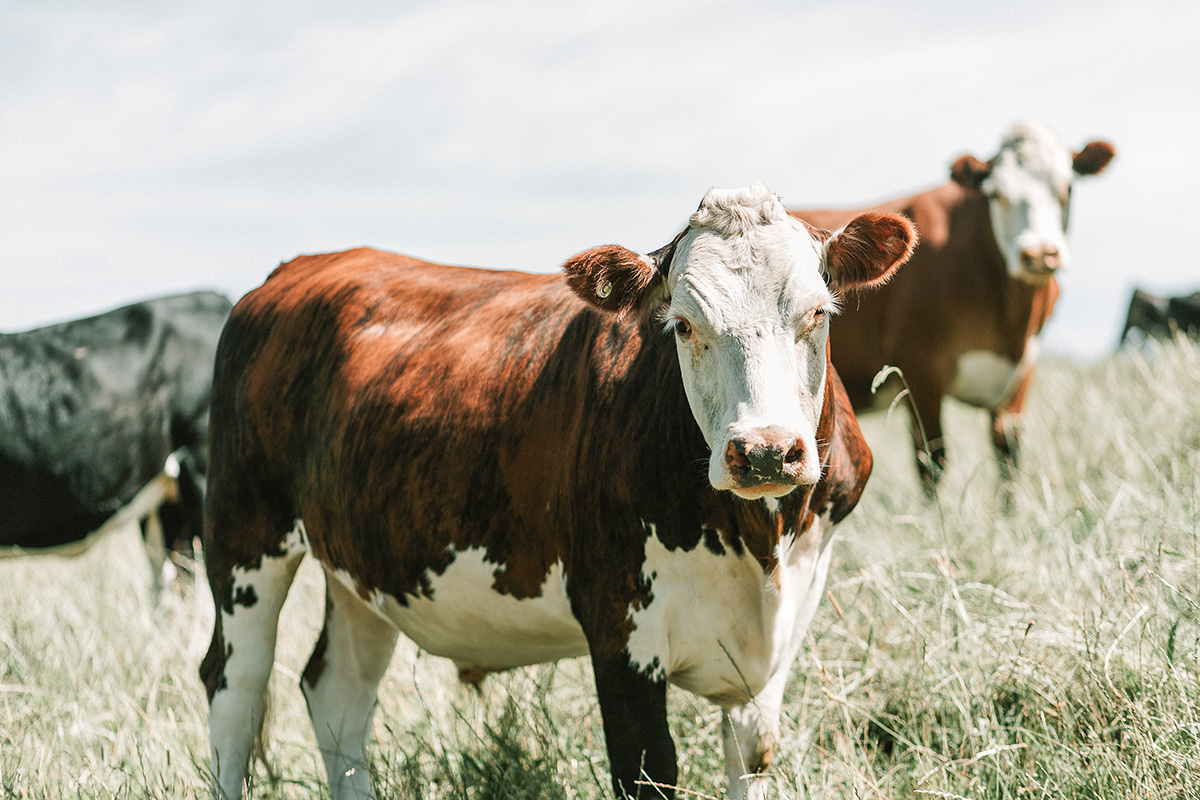Regenerative meat is meat production that follows the practices of regenerative agriculture.
Regenerative agriculture goes back to the days before the mass industrialisation of food. It works with nature, allowing crops to regrow naturally, and the natural nutrients to regenerate in the soil.
For over 200 years, farmers have been implementing the fastest and cheapest methods to fertilise crops leaving animals to graze on chemically fertilised land. Rather than improve the health of the crop, chemical fertilisers only temporarily add nutrients to the soil.
Regenerative agriculture looks to reverse this damage by rebuilding the soil’s organic matter and restoring the natural minerals.
When meat is produced in regenerative agriculture, the animals graze on crops rich in minerals and contain no chemicals.
This is good for both you and the environment.

The Nutritional Benefits Of Regenerative Meat
A study on the nutrient content in fruit and vegetables from 1950-1999 has seen a radical decline since the introduction of our current unnatural, fast pace production methods.
Regenerative agriculture farms produce meat that contains more B vitamins, zinc, phosphorus, calcium and copper, a study in PeerJ found. The meat also has a healthier balance of omega-3 and omega-6 fats.

The Environmental Benefits Of Regenerative Meat
Chemical fertilisers use a lot of energy to manufacture and when the microbes in the soil break them down, they release nitrous oxide into the air. Nitrous oxide is a greenhouse gas that heats the planet more than carbon dioxide.
Quantis found that regenerative grazing practices offset carbon emissions. When animals graze, they naturally fertilise the soil themselves. Rather than continuous grazing on that same land, the plants need time to regrow. When they regrow naturally, they produce more roots that travel deeper, boosting the fertility of the plant and the soil. These roots draw carbon from the atmosphere, increasing more soil carbon content than cows can emit in their own lifetime. This is a net-positive impact of climate change. A study on a regenerative farm in Georgia found they produce a 66% lower carbon footprint than a conventional commodity.
FoodPrint produced a report showing the quantity of greenhouse gases released per 4oz serving of common proteins. The 4oz regenerative meat studied in the report releases -0.7kg of greenhouse gases. The minus figure is due to regenerative meat’s carbon offset being higher than the amount of greenhouse gas it produces. The meat alternatives examined in the report were shown to contribute more greenhouse gas than regenerative meat: The Impossible Burger (0.4kg), tofu (0.3kg), and beans (0.2kg). Conventional beef was by far the highest at 3.5kg.
How Do I Know It Is Regenerative Meat?
Regenerative meat is not yet regulated. With the term’s current popularity, regenerative meat is in ‘buzzword’ danger.
To get the nutritional and environmental benefits from what we mean by ‘regenerative’ farming, three conditions should be met:
1. Rotational grazing – Alternative pastures are used to give others time to regenerate. The animals are also herded in an organic way that is known to them. This highly contributes to the happiness of the animals during their life, hence the quality of the meat.
2. Cover crops – Specific plants are used that return nutrients from the atmosphere to the soil each time a crop is harvested. These plants enhance biodiversity and water availability, control pests and disease, slow erosion and add organic matter to the soil.
3. Animals are free from discomfort or distress – When farmers follow the Five Freedoms of Animal Welfare, animals are healthy. This makes healthy meat.
For trustworthy regenerative meat, buy from us at Brunette Brisket. Our meat production realises all the environmental and nutritional benefits that regenerative agriculture has to offer.


